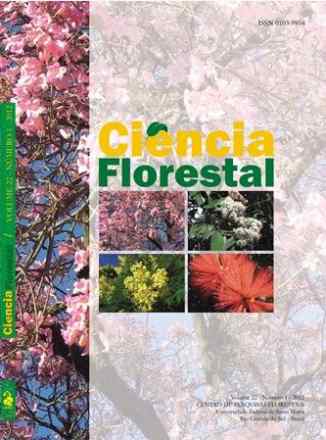ESTABELECIMENTO E MULTIPLICAÇÃO IN VITRO DE Luehea divaricata Mart. & Zucc.
Ciência Florestal
ESTABELECIMENTO E MULTIPLICAÇÃO IN VITRO DE Luehea divaricata Mart. & Zucc.
Autor Correspondente: Andressa Vasconcelos Flôres | [email protected]
Palavras-chave: açoita-cavalo, cultura de tecidos, meios de cultivo, regulador de crescimento
Resumos Cadastrados
Resumo Português:
O açoita-cavalo, Luehea divaricata Mart. & Zucc., pertencente à famÃlia Malvaceae, é uma espécie florestal
que sofreu grande ação antrópica nas últimas décadas. Esse fato contribuiu muito para a redução das
populações naturais e, consequentemente, de sua variabilidade genética, o que justifica a realização de
estudos relacionados à propagação da espécie. Como forma de propagação vegetativa, a micropropagação
torna-se uma opção para a regeneração de plantas que apresentam dificuldade de reprodução natural, além
de ser uma estratégia para a conservação das espécies. O trabalho teve como objetivos determinar o tipo de
explante e o meio de cultivo mais eficientes para o estabelecimento in vitro, além de verificar a influência
de diferentes concentrações da citocinina BAP na multiplicação de segmentos nodais de açoita-cavalo.
As sementes utilizadas foram coletadas e armazenadas pela Fundação Estadual de Pesquisa Agropecuária
– FEPAGRO-Florestas em Santa Maria, RS e as plântulas obtidas in vitro foram utilizadas como fonte
de explantes. Na seleção de explantes e meio de cultivo, foram testados segmentos apicais caulinares e
segmentos nodais cultivados nos meios nutritivos MS e WPM. Diferentes concentrações de BAP (0, 5,
10 e 15 mg L-1) foram avaliadas na multiplicação in vitro de açoita-cavalo. No estabelecimento in vitro de
açoita-cavalo podem-se empregar tanto segmentos apicais caulinares como segmentos nodais e ambos os
meios de cultivo. Visando a maximizar o cultivo de açoita-cavalo, deve-se utilizar o meio de cultivo WPM,
pelo custo reduzido. Na multiplicação in vitro de açoita-cavalo não deve ser adicionada a citocinina BAP,
pois na ausência desse regulador se observa melhor resposta dos explantes para a maioria das caracterÃsticas
avaliadas, além de reduzir os custos no cultivo in vitro da espécie.
Resumo Inglês:
Luehea divaricata Mart. & Zucc. of the Malvaceae family, is a forest tree species that has suffered great
anthropic disturbance during the last decades. This fact has contributed to the reduction of natural populations
and, consequently, of its genetic variability. This justifies studies related to the propagation of the species.
As a means of vegetative propagation, micropropagation is an alternative for the regeneration of plants with
difficult natural regeneration and a strategy for species conservation. The objectives of this study were to determine the most efficient type of explant and growth medium for in vitro establishment and verify the
influence of different concentrations of BAP cytokinin in the multiplication of nodal segments of Luehea
divaricata. The seeds used were collected and stored by the Fundação Estadual de Pesquisa Agropecuária
– FEPAGRO/Florestas (Agriculture and Cattle Research State Foundation – FEPAGRO/Forests), in Santa
Maria, RS, Brazil, and the seedlings obtained in vitro were used as sources of the explants. In the selection
of the explants and growth medium, the shoot apical and nodal segments grown in the MS and WMP
nutritive media were tested. Different concentrations of BAP (0, 5, 10 and 15 mg L-1) were evaluated in the
in vitro multiplication of the species. In the in vitro establishment of Luehea divaricata, both shoot apical
and nodal segments can be used and also both growth media. To maximize the growth of the species, the
WPM growth medium should be used due to its reduced cost. In the in vitro multiplication of the species,
cytokinin BAP should not be added because, besides reducing the costs in the in vitro cultivation of Luehea
divaricata, the best response for the majority of the characteristics evaluated was observed in the absence
of this regulator,.

